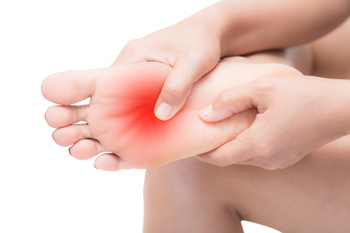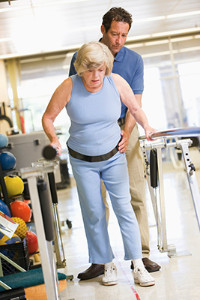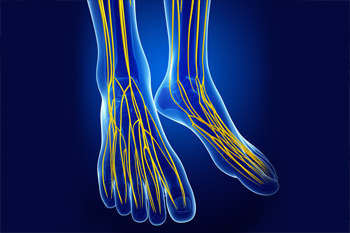Connect With Us
Blog
Items filtered by date: March 2020
What Is a Hammertoe?
 There are many types of deformities that can happen to the feet. One of these is referred to as a hammertoe, which can cause the toe to bend downward instead of naturally pointing forward. It can develop gradually due to genetic reasons, or from wearing shoes that do not have adequate room for the toes to move freely in. Additional reasons why this ailment may occur can include an injury to the toe, or medical conditions such as arthritis or nerve damage. Common side effects of hammertoe may consist of corns or calluses, they can form on top of the affected toe, and it may be difficult to walk and flex your foot. Patients may find mild relief when insoles are worn in the shoes, and surgery may be a necessary option to correct severe hammertoe. If you are afflicted with this ailment, it’s suggested that you consult with a podiatrist as quickly as possible for proper treatment to begin.
There are many types of deformities that can happen to the feet. One of these is referred to as a hammertoe, which can cause the toe to bend downward instead of naturally pointing forward. It can develop gradually due to genetic reasons, or from wearing shoes that do not have adequate room for the toes to move freely in. Additional reasons why this ailment may occur can include an injury to the toe, or medical conditions such as arthritis or nerve damage. Common side effects of hammertoe may consist of corns or calluses, they can form on top of the affected toe, and it may be difficult to walk and flex your foot. Patients may find mild relief when insoles are worn in the shoes, and surgery may be a necessary option to correct severe hammertoe. If you are afflicted with this ailment, it’s suggested that you consult with a podiatrist as quickly as possible for proper treatment to begin.
Hammertoe
Hammertoes can be a painful condition to live with. For more information, contact Scott Matthews, DPM, MD from Salem Foot Care . Our doctor will answer any of your foot- and ankle-related questions.
Hammertoe is a foot deformity that affects the joints of the second, third, fourth, or fifth toes of your feet. It is a painful foot condition in which these toes curl and arch up, which can often lead to pain when wearing footwear.
Symptoms
- Pain in the affected toes
- Development of corns or calluses due to friction
- Inflammation
- Redness
- Contracture of the toes
Causes
Genetics – People who are genetically predisposed to hammertoe are often more susceptible
Arthritis – Because arthritis affects the joints in your toes, further deformities stemming from arthritis can occur
Trauma – Direct trauma to the toes could potentially lead to hammertoe
Ill-fitting shoes – Undue pressure on the front of the toes from ill-fitting shoes can potentially lead to the development of hammertoe
Treatment
Orthotics – Custom made inserts can be used to help relieve pressure placed on the toes and therefore relieve some of the pain associated with it
Medications – Oral medications such as anti-inflammatories or NSAIDs could be used to treat the pain and inflammation hammertoes causes. Injections of corticosteroids are also sometimes used
Surgery – In more severe cases where the hammertoes have become more rigid, foot surgery is a potential option
If you have any questions please contact our office located in Wikesboro, NC . We offer the newest diagnostic and treatment technologies for all your foot and ankle needs.
What Symptoms are Indicative of Morton’s Neuroma?
 One common cause of Morton’s neuroma includes wearing footwear that is too tight for your feet. This condition may occur when a nerve between the toes becomes pinched and inflamed, often causing a numbing or tingling feeling in the affected foot. Some patients have also expressed it felt as if they were walking with a pebble in their shoe, as well as a burning felt in the forefoot. Along with ill fitting footwear, certain foot deformities may also be a factor in the development of Morton’s neuroma. Some conditions that increase your risk of developing a neuroma may include hammertoes and bunions. To help alleviate some of the discomfort associated with this condition, patients have found using insoles and custom orthotics to be quite helpful. If you believe you have developed Morton’s neuroma and would like more information on how to treat this condition, it is suggested that you speak with a podiatrist.
One common cause of Morton’s neuroma includes wearing footwear that is too tight for your feet. This condition may occur when a nerve between the toes becomes pinched and inflamed, often causing a numbing or tingling feeling in the affected foot. Some patients have also expressed it felt as if they were walking with a pebble in their shoe, as well as a burning felt in the forefoot. Along with ill fitting footwear, certain foot deformities may also be a factor in the development of Morton’s neuroma. Some conditions that increase your risk of developing a neuroma may include hammertoes and bunions. To help alleviate some of the discomfort associated with this condition, patients have found using insoles and custom orthotics to be quite helpful. If you believe you have developed Morton’s neuroma and would like more information on how to treat this condition, it is suggested that you speak with a podiatrist.
Morton’s neuroma is a very uncomfortable condition to live with. If you think you have Morton’s neuroma, contact Scott Matthews, DPM, MD of Salem Foot Care . Our doctor will attend to all of your foot care needs and answer any of your related questions.
Morton’s Neuroma
Morton's neuroma is a painful foot condition that commonly affects the areas between the second and third or third and fourth toe, although other areas of the foot are also susceptible. Morton’s neuroma is caused by an inflamed nerve in the foot that is being squeezed and aggravated by surrounding bones.
What Increases the Chances of Having Morton’s Neuroma?
- Ill-fitting high heels or shoes that add pressure to the toe or foot
- Jogging, running or any sport that involves constant impact to the foot
- Flat feet, bunions, and any other foot deformities
Morton’s neuroma is a very treatable condition. Orthotics and shoe inserts can often be used to alleviate the pain on the forefront of the feet. In more severe cases, corticosteroids can also be prescribed. In order to figure out the best treatment for your neuroma, it’s recommended to seek the care of a podiatrist who can diagnose your condition and provide different treatment options.
If you have any questions, please feel free to contact our office located in Wikesboro, NC . We offer the newest diagnostic and treatment technologies for all your foot care needs.
The Importance of Proper Senior Foot Care
 As the aging process occurs, the skin on the feet may become thin and lose cushioning. The feet may also be more susceptible to the development of uncomfortable foot conditions, which may include blisters and corns. Additionally, ingrown toenails may be a common ailment among seniors, as this can be a result of poor visibility while trimming the toenails. The feet may generally feel better when shoes and socks that are worn fit correctly, and it is beneficial to avoid wearing high heels. It may also be helpful to choose shoes that have Velcro fasteners, as opposed to laces that can be easily tripped on if they become untied. Many elderly patients choose to be under the care of a podiatrist, who can monitor any existing foot conditions.
As the aging process occurs, the skin on the feet may become thin and lose cushioning. The feet may also be more susceptible to the development of uncomfortable foot conditions, which may include blisters and corns. Additionally, ingrown toenails may be a common ailment among seniors, as this can be a result of poor visibility while trimming the toenails. The feet may generally feel better when shoes and socks that are worn fit correctly, and it is beneficial to avoid wearing high heels. It may also be helpful to choose shoes that have Velcro fasteners, as opposed to laces that can be easily tripped on if they become untied. Many elderly patients choose to be under the care of a podiatrist, who can monitor any existing foot conditions.
Proper foot care is something many older adults forget to consider. If you have any concerns about your feet and ankles, contact Scott Matthews, DPM, MD from Salem Foot Care . Our doctor can provide the care you need to keep you pain-free and on your feet.
The Elderly and Their Feet
As we age we start to notice many changes in our body, but the elder population may not notice them right away. Medical conditions may prevent the elderly to take notice of their foot health right away. Poor vision is a lead contributor to not taking action for the elderly.
Common Conditions
- Neuropathy – can reduce feeling in the feet and can hide many life-threatening medical conditions.
- Reduced flexibility – prevents the ability of proper toenail trimming, and foot cleaning. If left untreated, it may lead to further medical issues.
- Foot sores – amongst the older population can be serious before they are discovered. Some of the problematic conditions they may face are:
- Gouging toenails affecting nearby toe
- Shoes that don’t fit properly
- Pressure sores
- Loss of circulation in legs & feet
- Edema & swelling of feet and ankles
Susceptible Infections
Diabetes and poor circulation can cause general loss of sensitivity over the years, turning a simple cut into a serious issue.
If you have any questions please feel free to contact our office located in Wikesboro, NC . We offer the newest diagnostic and treatment technologies for all your foot and ankle needs.
Possible Symptoms of Poor Circulation
 The medical condition that is known as poor circulation has noticeable symptoms that are often present in the feet. Common symptoms may include experiencing coldness of the affected area, a tingling sensation, and the feet may appear to be swollen or bruised. Patients who lead a sedentary lifestyle may be susceptible to poor circulation. Additionally, poor circulation may develop if medical conditions exist such as diabetes, obesity, or peripheral artery disease (PAD). Circulation may improve when a healthy lifestyle is practiced. This can consist of frequently performing a gentle exercise routine, drinking plenty of water daily, and maintaining a healthy weight. If you have symptoms of poor circulation, it is advised that you schedule a consultation with a podiatrist who can help you to manage this condition.
The medical condition that is known as poor circulation has noticeable symptoms that are often present in the feet. Common symptoms may include experiencing coldness of the affected area, a tingling sensation, and the feet may appear to be swollen or bruised. Patients who lead a sedentary lifestyle may be susceptible to poor circulation. Additionally, poor circulation may develop if medical conditions exist such as diabetes, obesity, or peripheral artery disease (PAD). Circulation may improve when a healthy lifestyle is practiced. This can consist of frequently performing a gentle exercise routine, drinking plenty of water daily, and maintaining a healthy weight. If you have symptoms of poor circulation, it is advised that you schedule a consultation with a podiatrist who can help you to manage this condition.
Poor circulation is a serious condition and needs immediate medical attention. If you have any concerns with poor circulation in your feet contact Scott Matthews, DPM, MD of Salem Foot Care . Our doctor will treat your foot and ankle needs.
Poor Circulation in the Feet
Poor blood circulation in the feet and legs is can be caused by peripheral artery disease (PAD), which is the result of a buildup of plaque in the arteries.
Plaque buildup or atherosclerosis results from excess calcium and cholesterol in the bloodstream. This can restrict the amount of blood which can flow through the arteries. Poor blood circulation in the feet and legs are sometimes caused by inflammation in the blood vessels, known as vasculitis.
Causes
Lack of oxygen and oxygen from poor blood circulation restricts muscle growth and development. It can also cause:
- Muscle pain, stiffness, or weakness
- Numbness or cramping in the legs
- Skin discoloration
- Slower nail & hair growth
- Erectile dysfunction
Those who have diabetes or smoke are at greatest risk for poor circulation, as are those who are over 50. If you have poor circulation in the feet and legs it may be caused by PAD and is important to make changes to your lifestyle in order to reduce risk of getting a heart attack or stroke. Exercise and maintaining a healthy lifestyle will dramatically improve conditions.
As always, see a podiatrist as he or she will assist in finding a regimen that suits you. A podiatrist can also prescribe you any needed medication.
If you have any questions please feel free to contact our office located in Wikesboro, NC . We offer the newest diagnostic and treatment technologies for all your foot and ankle needs.
Blog Archives
- March 2025
- February 2025
- January 2025
- December 2024
- November 2024
- October 2024
- September 2024
- August 2024
- July 2024
- June 2024
- May 2024
- April 2024
- March 2024
- February 2024
- January 2024
- December 2023
- November 2023
- October 2023
- September 2023
- August 2023
- July 2023
- June 2023
- May 2023
- April 2023
- March 2023
- February 2023
- January 2023
- December 2022
- November 2022
- October 2022
- September 2022
- August 2022
- July 2022
- June 2022
- May 2022
- April 2022
- March 2022
- February 2022
- January 2022
- December 2021
- November 2021
- October 2021
- September 2021
- August 2021
- July 2021
- June 2021
- May 2021
- April 2021
- March 2021
- February 2021
- January 2021
- December 2020
- November 2020
- October 2020
- September 2020
- August 2020
- July 2020
- June 2020
- May 2020
- April 2020
- March 2020
- February 2020
- January 2020
- December 2019
- November 2019
- October 2019
- September 2019
- August 2019
- July 2019
- June 2019
- May 2019
- April 2019
- March 2019
- February 2019
- January 2019
- December 2018
- November 2018
- October 2018
- September 2018
- August 2018
- July 2018
- June 2018
- May 2018

